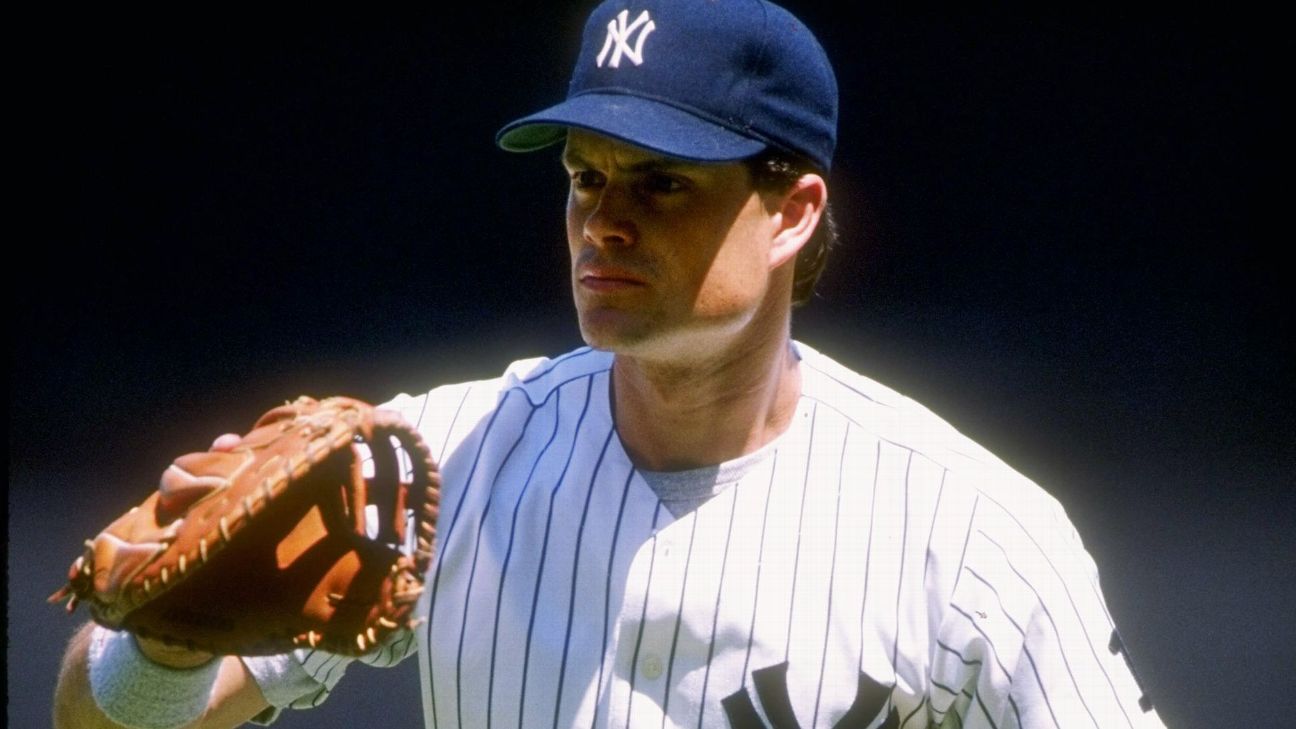We’ve covered the one-hit wonders in the National League. Let’s move over to the American League. This list includes maybe the most famous one-hit wonder, a guy nicknamed “The Hammer,” an unlikely MVP winner and the all-time record holder for doubles in a season.
Jump to …
AL East | AL Central | AL West
AL East
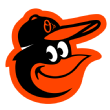 Baltimore Orioles: Wally Bunker (1964)
Baltimore Orioles: Wally Bunker (1964)
Stats: 19-5, 2.69 ERA, 214 IP, 96 SO, 3.4 WAR
In the late 1950s and early 1960s, under several executives — manager Paul Richards, scouting director Jim McLaughlin, general managers Lee MacPhail and Harry Dalton — the Orioles developed “The Oriole Way” of building an organization. From 1960 to 1985, they suffered just two losing seasons, including none from 1969 to 1985. They were especially adept at producing young starting pitchers. The 1960 team featured the “Kiddie Corps” rotation, with five starters aged 21 or 22. Dave McNally, who would win 184 games, reached the majors in 1962. Hall of Famer Jim Palmer came up in 1965 (both debuted as teenagers).
Wally Bunker was another teenage sensation. He started one game in September 1963 when he was 18, just three months after finishing high school in the Bay Area and signing with the Orioles for $75,000. The next year, under the ridiculous “bonus baby” rules of the time, the Orioles had to keep Bunker on the roster or risk losing him on waivers if they sent him to the minors. So he joined the rotation in May and pitched a one-hit complete game in his first start. Overall, he made 29 starts, threw 12 complete games and his 19 wins remain the record for a teenager in the 20th or 21st century.
“He has a good fastball that he can make sink or rise. That’s very unusual for one so young,” Orioles pitching coach Harry Brecheen said at the time. “And he’s got a good curve and a changeup. But most of all he’s got control.” The Orioles didn’t really abuse Bunker in 1964, certainly not by the standards of the time, and while we don’t have pitch-count numbers, he would have been an efficient pitcher, without many walks or strikeouts. Bunker had a sore shoulder from the get-go in spring training in 1965, however, and altered his motion to throw less over the top. His elbow started hurting. In 1966, he had blisters and more elbow problems. He had a moment of glory in the 1966 World Series, a four-game sweep for the Orioles, when he tossed a shutout to beat the Dodgers 1-0 in Game 3. His last season would be 1971, when he was still just 26.
How great could Bunker have been? Even in 1964, his 4.0 K’s per nine innings was well below the league average of 6.1. His BABIP that year was .216, so we might say that he had some good luck on balls in play, although with his sinker he was probably also good at inducing soft contact. It didn’t hurt that he had Brooks Robinson and Luis Aparicio in the infield behind him. It’s worth noting that his bonus was large for the era, so he had to have thrown reasonably hard or he wouldn’t have received $75,000. Perhaps more strikeouts would have come. Alas, as with so many others, we’ll never know the answer.
 Boston Red Sox: Sam Horn (1987) and Phil Plantier (1991)
Boston Red Sox: Sam Horn (1987) and Phil Plantier (1991)
Stats: .278/.356/.589 (Horn) and .331/.420/.615 (Plantier)
Earl Webb, who set the still-standing single-season record with 67 doubles in 1931, is a bit of a one-hit wonder himself, but let’s turn to more modern times to focus on two young sluggers who looked like future stars after promising rookie seasons.
Horn was the 16th overall pick in the 1982 draft, but wasn’t much of a prospect after hitting just .232 with 11 home runs in the minors in 1986. Then came a swing change — yes, kids, they used to do that back in the day as well. “Ted Williams advised Horn to swing up on the ball and hit the ball in the air more often,” Baseball America reported in 1987. Horn hit .321 with 30 home runs at Triple-A, then got called up to Boston and hit .278/.356/.589 with 14 home runs in just 158 at-bats.
He became an immediate cult hero in Boston. His rookie card was one of the must-have cards of 1988. Then he didn’t hit. Horn was hitting .148 in early June when he was sent down to Pawtucket; he didn’t hit there either. In 1989, he made the big club out of spring training, but mostly served as a pinch hitter and was hitting .114 when he was sent down June 7. He finished the season at .148 again after being recalled in September. That was it for Horn in Boston. He had a couple of good years as a platoon player with the Orioles in 1990 and 1991 (128 OPS+), but those 1988 rookie cards didn’t exactly pay for anybody’s college education.
In a sense, Horn’s story is easy to understand. 1987 was the famous rabbit-ball year, so that helped Horn’s power production that season. Among players with at least 100 PAs in 1987, he had the third-highest strikeout rate (behind Bo Jackson and Rob Deer), so he was an all-or-nothing type at the plate. He wasn’t a great athlete and the Red Sox weren’t the best organization for a young player at the time, so there was little margin for error and the Red Sox didn’t have the patience to stick with him for 300 at-bats.
Plantier looked much more like the real deal. At age 22 in 1991, he hit .305/.438/.557 with more walks than strikeouts for Pawtucket. He tore it up when called up to the Red Sox, hitting .331 with 11 home runs in 148 at-bats. Bill James wrote, “Plantier, assuming he stays in the lineup, figures to hit .280 with a slugging percentage over .500, 25 to 40 home runs. He’s an awesome hitter, in other words.” Remember, offense was in a bit of a sinkhole from 1988 to 1992. Those numbers would have made Plantier one of the best hitters in the league. James mentioned the scouts who said Plantier had a big swing and wouldn’t hit major league pitching, when James really thought they were reflecting on Plantier’s unusual batting stance — he hit from a severe squat. Manager Joe Morgan called it a “toilet seat” stance.
Plantier hit just .246/.332/.361 in 1992 and was traded to the Padres, where he did have a solid season in 1993, hitting .240/.335/.509 with 34 home runs and 100 RBIs (so he wasn’t quite a one-year wonder). There were some injuries along the way, but he was never again a full-time player. He finished with 91 career home runs and a .243 average. Interestingly, despite the unusual batting stance, he has gone on to a long career as a hitting coach, including in the majors with the Padres and now as the Triple-A hitting coach for the Yankees.
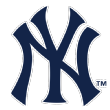 New York Yankees: Kevin Maas (1990)
New York Yankees: Kevin Maas (1990)
Stats: .252/.367/.535, 21 HR, 41 RBIs, 1.2 WAR
Maybe there were better one-year wonders in franchise history than Maas, but ask any Yankees fan over the age of 25 to name one and 99.9% of them will mention Maas. Really, it was more like a half-year wonder. In the midst of the worst Yankees season since 1913 — they would finish 67-95 — Maas came up in late June 1990 to replace Deion Sanders on the roster and fill in for an injured Don Mattingly at first base, and immediately started mashing home runs to provide a beacon of hope. In his first 30 games (27 starts), Maas hit .292/.398/.688 with 12 home runs.
“The brightest new player on the Yankees, and, conceivably, the start of something big,” a New York Times columnist wrote in August. “He is 25 years old, has a lean, boyish face that looks almost small under the long bill of his cap, wide blue eyes, a thin waist, sizable biceps and a compact, lovely, lethal swing that has produced 15 home runs in eight weeks.”
That age should have been a giveaway that perhaps Maas wasn’t quite the real deal. Yes, sometimes a player develops late — think of somebody like Josh Donaldson among current players — but Maas had been a 22nd-round pick and was hardly a top prospect (although he was hitting .320 at Triple-A when he was called up). He simply ran into a hot streak at the start of his career, creating the unrealistic idea that he might even be the next Mattingly. Instead, he hit .220 in 1991, .248 in 1992 and by 1993 was back in the minors. The Yankees released him in spring training in 1994.
“I wish I knew what happened,” general manager Gene Michael said.
“As far as what happened to Kevin, that’s a puzzle,” manager Buck Showalter said.
“Maybe the expectations were too high,” Maas said.
 Tampa Bay Rays: Andy Sonnanstine (2008)
Tampa Bay Rays: Andy Sonnanstine (2008)
Stats: 13-9, 4.38 ERA, 193⅓ IP, 124 SO, 1.4 WAR
In their first 10 seasons of existence, the Tampa Bay Devil Rays not only finished under .500 all 10 seasons, but lost 90-plus games every season. In 2008 they changed their name to the Rays and had one of the most remarkable single-year turnarounds in history, improving from 66-96 to 97-65 and reaching the World Series. They made several obvious changes: They improved the defense, Evan Longoria came up and won Rookie of the Year, they traded for Matt Garza.
They also received some career seasons from the likes of Grant Balfour (1.54 ERA) and J.P. Howell (2.22 ERA) in the bullpen. Sonnanstine also gave them a reliable starter in a rotation led by James Shields and Scott Kazmir. Sonnanstine had gone 6-10 with a 5.85 ERA as a rookie in 2007 and as a finesse guy — his fastball averaged just 87.0 mph that year — he needed that improved defense behind him. In the playoffs, he beat the White Sox in the division series and the Red Sox in the American League Championship Series. His success didn’t last. He had a 6.77 ERA in 2009 and his last season in the majors was 2011.
 Toronto Blue Jays: Aaron Sanchez (2016)
Toronto Blue Jays: Aaron Sanchez (2016)
Stats: 15-2, 3.00 ERA, 192 IP, 161 SO, 5.1 WAR
Sanchez is still just 27, so let’s not write him off just yet, but so far he has been unable to replicate his wonderful 2016 season, when he helped the Jays reach the ALCS by leading the American League in ERA and losing just two of his 30 starts. Yes, that kind of win-loss record requires a little luck and run support, but the only other pitcher to make 30 starts in a season and lose just twice was Randy Johnson in 1995, when he went 18-2.
At his best in 2016, Sanchez relied heavily on a hard sinker — he threw it 55% of the time — that induced weak contact and grounders. He allowed just 15 home runs, leading the AL in lowest home run rate among starters. Since then, it’s been a series of issues: blisters in 2017 that limited him to eight starts, control problems and then, after a trade to Houston in 2019, season-ending shoulder surgery. His comeback may be on hiatus until 2021.
AL Central
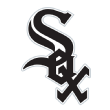 Chicago White Sox: Ron Kittle (1983)
Chicago White Sox: Ron Kittle (1983)
Stats: .254/.314/.504, 35 HR, 100 RBIs, 1.9 WAR
Kittle’s rise to the 1983 Rookie of the Year is an improbable story, one of perseverance that sounds more like something from the 1920s than the 1980s. Undrafted out of high school in Gary, Indiana, Kittle wrote in his personal blog that he was getting ready to head to work with his dad in the iron mills of Gary in 1976 when he read in the paper that the Dodgers were holding a tryout camp. He was reluctant to go because he didn’t want to miss out on the overtime pay he’d earn that day. Dad said he’d make up the difference.
“There were 264 guys that showed up to the tryout,” Kittle wrote. “Only I was asked to stay for extra hitting. They kept turning up the speed on the pitching machine. On my last swing, I hit the ball so far it went out of the field and into a fresh bed of concrete they were pouring for a new sidewalk.”
He headed to spring training in 1977 and was assigned to the Midwest League. In his first professional game, he scored on a base hit, but the catcher jumped up to catch the ball and landed on Kittle’s neck. He had broken two vertebrae in his neck, although he didn’t know it at the time. He thought it was a “stinger.” He writes that he essentially played with one paralyzed arm.
The following season the Dodgers released him. He went home, finally went to a specialist and had spinal fusion surgery, which involved taking a piece of his hip bone and putting it in his neck. He wore a halo screwed into his skull and was told playing baseball again was out of the question. He returned to the iron mills, then defied doctor’s orders and started playing semi-pro baseball. As Kittle tells the story, in one game he hit a 550-foot homer that bounced off a car — and in the car were White Sox owner Bill Veeck and former pitcher Billy Pierce. The White Sox invited him to old Comiskey Park for a tryout, he hit a bunch of home runs and signed that day. (A New York Times story from 1983 tells a less mythological version of events, that somebody saw Kittle play and mentioned him to Pierce, who got him the tryout.)
Kittle became a prodigious minor league slugger. In 1981, he mashed 40 home runs at Double-A in just 109 games. In 1982, he belted 50 for Triple-A Edmonton — no minor leaguer has hit 50 homers in a season since. He was still living with his parents as a 25-year-old rookie in 1983. The “Winnin’ Ugly” White Sox won 99 games and made the playoffs for the first time since 1959. Kittle made the All-Star team and became a huge fan favorite thanks to his blue-collar background and towering home runs.
Maybe Kittle wasn’t quite a one-year wonder. He hit 32 home runs in 1984, although his batting average fell to .215. He wasn’t much of a fielder (although he had a good arm) and ended up as a DH and platoon player. The White Sox traded him in 1986 and he drifted around the league a few years, finishing with 176 career home runs. He still serves as a community relations representative for the White Sox, a testament to his ongoing popularity.
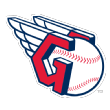 Cleveland Indians: Joe Charboneau (1980)
Cleveland Indians: Joe Charboneau (1980)
Stats: .289/.358/.488, 23 HR, 87 RBIs, 2.4 WAR
“Super Joe,” as they called Charboneau that summer in Cleveland, is one of the most memorable one-hit wonders in the game’s illustrious history. He won Rookie of the Year honors, but became a legendary character along the way. He opened beer bottles with his eye socket, fixed a broken nose with pliers, ate lit cigarettes and drank beer through his nose — or so the stories went. Most were exaggerations. “You know, I only opened a beer bottle one time with my eye socket, back when I was in college,” Charboneau once said. “But that story followed me the rest of my career.”
He became so popular that a local group recorded a song, “Go Joe Charboneau,” that reached No. 4 on the charts in Cleveland. The hitting was no fluke though. He had hit .350 in Class A in 1978, leading the California League, although the Phillies traded him to Cleveland. He hit .352 with 21 home runs at Double-A in 1979. With Cleveland, he hit a home run into the third deck in left field at Yankee Stadium — at the time, he was the third player to do that (along with Jimmie Foxx and Frank Howard).
Charboneau injured his back on a slide in spring training in 1981, however, and hit just .210 in 1981. He had back surgery that offseason, but played just 22 more games in the big leagues.
While Charboneau is still fondly remembered in Cleveland and makes appearances for the organization, what’s forgotten is the Indians had another one-year wonder in 1980. Miguel Dilone, a 25-year-old outfielder from the Dominican Republic, was purchased from the Cubs in early May and hit .341 with 61 steals in what would be his only season as a full-time player. He finished third in the batting race — that was the year George Brett hit .390 — and his 61 steals remain the fourth-highest total in franchise history. Only Kenny Lofton had more in a season for Cleveland.
Dilone was the kind of player who doesn’t really exist in 2020 baseball: a speedster who slapped the ball around. He had no home runs in 1980 and just six in 2,000 career at-bats. After getting platooned in 1981, in September of that year, Dilone demanded a trade and called manager Dave Garcia a “front-runner” and “two-faced boss.” The front office accused Dilone of using sore thumbs as an excuse for his poor play (he hit .290 that year, although with just 10 extra-base hits in 269 at-bats). Garcia complained that Dilone “may think he can play center field for us, but he can’t because [Rick] Manning is a more talented defensive player.” Dilone remained with the Indians in 1982 (so did Garcia), but he hit just .235. His last season in the majors was 1985.
Despite the surprising performances from Charboneau and Dilone, and the team leading the AL in OBP, the 1980 Indians still finished just 79-81.
 Detroit Tigers: Mark Fidrych (1976)
Detroit Tigers: Mark Fidrych (1976)
Stats: 19-9, 2.34 ERA, 250.1 IP, 97 SO, 9.6 WAR
Fidrych burst onto the scene in 1976 like a bolt of lightning, a 21-year-old rookie with a big mop of curly blond hair. He talked to the baseball with a “pre-delivery flurry of overexcited twitches, glances, and arm loosening wiggles,” as Roger Angell wrote, although he worked very quickly, with a “burning anxiety to get rid of the ball.” He was nicknamed “The Bird” in the minor leagues for his resemblance to the Sesame Street character Big Bird, and he pitched with an unbridled exuberance, becoming a national phenomenon the likes of which baseball hasn’t witnessed since, with the possible exception of Fernando Valenzuela in 1981.
Fidrych started the season in the Tigers’ bullpen, made two relief appearances, and finally started on May 15 when Joe Coleman came down with the flu. Fidrych threw a complete game. He started 10 days later — and threw another complete game. He kept winning, kept throwing complete games, and on June 28, he beat the Yankees before a huge TV audience on “Monday Night Baseball.” A crowd of 47,000 at Tiger Stadium gave him a standing ovation — and kept on cheering even after he left the field, chanting “We want the Bird! We want the Bird!” to eventually draw Fidrych back out of the clubhouse for a curtain call as he shook hands with fans in one of the greatest videos you’ll ever see:
“It’s no act. There’s nothing contrived about him and that’s what makes him a beautiful person,” teammate Rusty Staub said. Yankees catcher Thurman Munson called him a showboat. Fidrych responded, “Who’s Thurman Munson?” Coach Jim Hegan told him he was perhaps the best catcher in the majors. Two weeks later, Fidrych started the All-Star Game. His catcher was Thurman Munson.
In his first 13 starts, Fidrych tossed 12 complete games, including three of 11 innings, so he actually averaged 9⅔ innings per start. Fans began following him home after starts. They gave him poems, portraits and stuffed birds. The Twins delayed a game 30 minutes because of a huge walk-up crowd. That year, the Tigers averaged 33,649 fans when he started compared to 13,893 when he didn’t. He made 29 starts — 13 of those on three days’ rest — and tossed 24 complete games, leading the American League in complete games and ERA. He finished second to Jim Palmer in the Cy Young voting.
Then came the tragic ending. In spring training 1977, he tore cartilage in his knee shagging flies. Five weeks after returning in May, he tore his rotator cuff in a game at Baltimore. Before that start he was 6-2 with a 1.83 ERA and seven complete games in eight starts. He was never the same. He threw his final pitch in the big leagues in 1980. He became a truck driver and bought a farm. He died in 2009 when a dump truck he was working on fell on him.
One of the enduring mysteries about Fidrych: How great could he have been? Like Wally Bunker, he didn’t strike out many batters, averaging just 3.5 K’s per nine innings as a rookie versus the league average of 4.7. He threw a sinking fastball with great movement and a hard slider, everything at the knees. It’s worth noting that he had raised his strikeout total to 5.1 per nine in 1977 before the injury. Heck, Palmer averaged just 5.0 K’s per nine in his Hall of Fame career. Imagine Fidrych pitching with Lou Whitaker and Alan Trammell behind him. Then again, maybe he wouldn’t have pitched too long anyway. Even after his glorious rookie season, he talked about how baseball was a “job” and not as fun as in high school. He talked about going to auto mechanics school the next offseason and said he saw himself playing only until he was 30. We never got the chance to find out.
 Kansas City Royals: Bob Hamelin (1994)
Kansas City Royals: Bob Hamelin (1994)
Stats: .282/.388/.599, 24 HR, 65 RBIs, 2.6 WAR
Manny Ramirez was an American League rookie in 1994. Jim Edmonds was a rookie. So was Carlos Delgado. Rusty Greer hit .314 with a .410 OBP. None of them won Rookie of the Year. Instead, in that strike-shortened season, it was a 26-year-old burly DH for the Royals who wore glasses and had played nose tackle in high school (receiving a scholarship offer from Notre Dame) who won top honors. Predictably, they called him “The Hammer,” and with his everyman physique, Bob Hamelin became an immediate fan favorite.
Hamelin had been a freshman All-American at UCLA, but then transferred to Rancho Santiago JC, and the Royals drafted him in the second round in 1988. He suffered a stress fracture in his back, had surgery, put on weight and his trek through the minors was slow. He finally broke out at Triple-A Omaha in 1993 with 29 home runs and made the Royals out of spring training in 1994.
“He’s not some flash in the pan,” Royals manager Hal McRae said at the time. “He’s too good a hitter for that. He’s got a good eye and a level head.” After the strike, Hamelin came to camp overweight in 1995. He got off to a slow start. New manager Bob Boone and bench coach Gene Mauch weren’t fans. He was sent down to Omaha and finished the year at .168, and played just one more year with the Royals and one more apiece with Detroit and Milwaukee.
Now a scout with the Red Sox, Hamelin recently told MLB.com, “I have a lot to be grateful for. I mean, [I] was the Rookie of the Year. My favorite part of that story is that you know who the runner-up was that year? Manny Ramirez. I beat out Manny Ramirez. I’ve got that forever.”
 Minnesota Twins: Zoilo Versalles (1965)
Minnesota Twins: Zoilo Versalles (1965)
Stats: .273/.319/.462, 19 HR, 77 RBIs, 7.2 WAR
In the National League list of one-hit wonders, I wrote about Jim Konstanty, the 33-year-old relief pitcher for the Phillies who won the MVP award in 1950. Versalles is in some fashion the American League version of Konstanty, probably the least accomplished player to win an AL MVP. While he had a fairly long MLB career, including seven seasons as a regular, Versalles finished with just 12.6 career WAR, and the only season he topped 3.0 was in 1965.
While he finished with just a .319 OBP, the lowest ever for a non-pitcher MVP, Versalles did a lot of other things that season: He led the AL in runs (126), doubles (42), triples (12), extra-base hits (76) and total bases (308) while also winning a Gold Glove. He stole 27 bases in 32 attempts. The Twins won the pennant and, in a weak season for star performances, Versalles led all position players in WAR (only Cleveland pitcher Sam McDowell was higher). It’s hard to picture a guy with a .319 OBP being the best player in the league, but Versalles was a worthy selection and received 19 of the 20 first-place votes.
Versalles was only 25 that season, but never came close to replicating that performance. In 1966, he battled a severe case of the flu into May and got off to a slow start, then injured his heel, which led to a painful hematoma in his back (blood leakage and tissue swelling). He would suffer recurring back pain the rest of his career, and his power numbers nosedived. It didn’t help that he had always been error-prone at shortstop (he made 39 errors in 1965).
He would spend his post-baseball years in the Minneapolis area, unemployed much of the time and subsisting on disability and Social Security checks and a small baseball pension. He was forced to sell his MVP trophy and was found dead from heart disease in his home in 1995, just 55 years old.
AL West
 Houston Astros: Jason Lane (2005)
Houston Astros: Jason Lane (2005)
Stats: .267/.316/.499, 26 HR, 78 RBIs, 1.8 WAR
The 2005 Astros were the first Houston team to reach the World Series, which was a little bit of a surprise because it came at the end of the Jeff Bagwell-Craig Biggio era. In fact, Bagwell was hurt most of the year and played just 39 games. Biggio was 39 and well past his prime. The pitching staff was great, with Roger Clemens (1.87 ERA), Andy Pettitte (2.39 ERA), Roy Oswalt (2.94) and Brad Lidge (42 saves), but it was hardly the best Astros team of that era.
The offense had Lance Berkman, a career year from Morgan Ensberg (fourth in the MVP voting) and Lane, a 28-year-old right fielder in his only season as a regular in the majors. He hit 26 home runs in the regular season and two more big ones in the NLCS upset of the Cardinals: He homered in a 2-1 victory in Game 4 and again in a 5-1 victory in the clinching Game 6. Lane hit .201 in 2006 and .175 in 2007 and that was it … at least as a hitter. Seven years after his last season in the majors as a position player, Lane made it back with the Padres in 2014 as a pitcher, appearing in three games and allowing just one run 10⅓ innings.
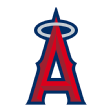 Los Angeles Angels: Peter Bourjos (2011)
Los Angeles Angels: Peter Bourjos (2011)
Stats: .271/.327/.438, 12 HR, 43 RBIs, 4.9 WAR
The answer to the question: Who was the Angels’ center fielder before Mike Trout? Bourjos had one season in the majors as a regular and he was a valuable player as a speed-first defender in center field who produced just enough at the plate. Bourjos began the 2012 season as the starting center fielder, with Trout in the minors. (Trout suffered from a virus early in spring training and dropped nearly 20 pounds so did not get in enough game action to start in the bigs.) That all changed on April 28. Trout was hitting .403 at Salt Lake. Bourjos was hitting .167 for L.A. Veteran Bobby Abreu was hitting .208 and was released to clear room for Trout.
Bourjos became a bench player, although he would continue to start against lefties, with Trout sliding over to left field. He would often enter games as a defensive replacement in center, with Trout again moving over to left. Even in 2013 the Angels hadn’t completely given up on Bourjos as Trout started 40 games in left field. In the end, Bourjos just didn’t have quite enough stick to be a starter and his 2011 campaign was fueled by a .338 BABIP compared to his career mark of .308, and his lack of plate discipline — he finished his career with a 5.7% walk rate and 24.1% strikeout rate — kept him in a part-time role.
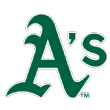 Oakland Athletics: Mitchell Page (1977)
Oakland Athletics: Mitchell Page (1977)
Stats: .307/.405/.521, 21 HR, 75 RBIs, 6.1 WAR
The 1977 A’s were a terrible team, finishing in last place behind the expansion Mariners. Charlie Finley had lost all his stars (except Vida Blue) from the dynasty that won three World Series. They drew fewer than 500,000 fans for the season. In the midst of that awfulness, they had one shining star. Page was a product of the talented Pittsburgh farm system and Finley swung a trade in spring training that sent Phil Garner to the Pirates in exchange for Page, Tony Armas, Rick Langford, Doug Bair and Doc Medich. It was actually an excellent trade for the A’s — and would have been even better if Page had repeated his 1977 season.
Page was 25 — old for a rookie — but showcased a broad range of skills. He was 42-for-47 stealing bases and drew 78 walks, ranking fourth in the AL in OBP, ninth in slugging, fourth in OPS and fourth in WAR. He lost the Rookie of the Year award to Eddie Murray, and while Murray eventually became a Hall of Famer, Page clearly had the superior season. Page looked like a star in the making.
Page had a productive 1978 (2.3 WAR), but began to fall out of shape. He was just 23-for-42 as a base stealer and his defense suffered. He develop a drinking problem that he battled the rest of his life. He smoked. By 1981, he was back in the minors.
Page would return to the game in the 1990s as a hitting instructor and earned rave reviews as the Cardinals’ hitting coach from 2001 to 2004 — that last season they led the NL in runs and reached the World Series. Players, however, also noticed alcohol on his breath at the ballpark and he lost his job after the World Series. He later became hitting coach for the Nationals, but lost that job as well. He was just 59 when he passed away in 2011.
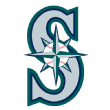 Seattle Mariners: Dave Fleming (1992)
Seattle Mariners: Dave Fleming (1992)
Stats: 17-10, 3.39 ERA, 228.1 IP, 112 SO, 5.1 WAR
Fleming was a 22-year-old rookie in 1992, a third-round pick out of the University of Georgia. The soft-tossing lefty got hammered in his first start that season, but then went 9-0 with a 2.12 ERA over his next 11 starts, baffling hitters with his array of slow stuff. As Mariners catcher Lance Parrish said, “You stand on the sideline and it’s pretty obvious he doesn’t have a great fastball or a great curve or a great slider, but he knows what he’s doing. He knows when to throw strikes and when to go outside the zone.” He finished the season with seven complete games and four shutouts.
A seismic shift happened in baseball after the 1992 season. Offense in the AL increased from 4.32 runs per game to 4.71 in 1993, then up to 5.23 in 1994. Pitchers like Fleming with a low strikeout rate and mediocre fastball couldn’t survive in this new era of juicier baseballs and juiced-up sluggers. He went 12-5 in 1993, but with a 4.36 ERA, and his walk rate increased from 2.4 per nine innings to 3.6. In 1994, he went 7-11 with a 6.46 ERA. His last season in the majors was 1995.
 Texas Rangers: Alexi Ogando (2011)
Texas Rangers: Alexi Ogando (2011)
Stats: 13-8, 3.51 ERA, 169 IP, 126 SO, 3.6 WAR
The Rangers reached their second straight World Series in 2011 and Ogando was a big reason. The second-year right-hander had pitched well as a rookie reliever in 2010 (1.30 ERA in 41 innings) and then moved into the rotation, making the All-Star team. His backstory was even more incredible. He had originally been an outfielder with the A’s organization. The Rangers took him in the Rule 5 draft in 2005 with the idea of converting him to a pitcher, but it took him four years to reach the States due to a visa issue over a human trafficking ring involving players from the minor leagues. He spent that time pitching in the Dominican Summer League and winter ball.
For the 2012 season, the Rangers came up with the brilliant idea of moving closer Neftali Feliz into the rotation and Ogando back to the bullpen. (They also signed veteran closer Joe Nathan.) It was a bad idea from the start. Ogando had been successful in his first season as a starter. Feliz had been the 2010 Rookie of the Year, but had been less dominant in 2011, so it wasn’t clear why making him a starter made sense. It backfired in a big way. Feliz made seven starts before undergoing Tommy John surgery. He was never as good again. Ogando had a solid year in the bullpen in 2012, then moved back to the rotation for 2013, but he too got injured. There’s no way of knowing if the role changes were a direct cause of the injuries, but two promising careers were derailed.
